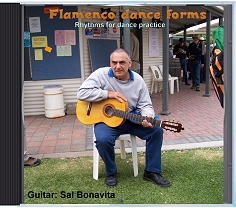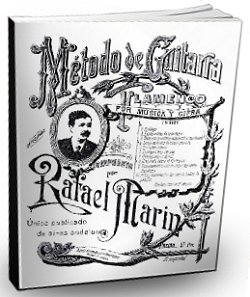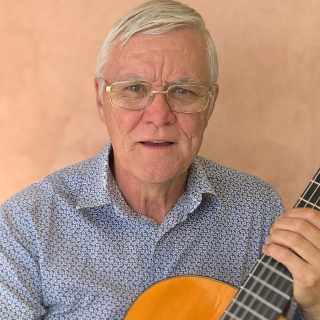3 simple secrets
SECRET ONE (developing speed)
Practice slowly
SECRET TWO (efficiency)
In the beginning, take the time to feel what the fingers are doing. It's worth spending a few minutes at the start of each practice session doing what I'm about to tell you.
Please don't dismiss this as unimportant.
When you finish plucking a string, get the next finger on the string as quickly as possible ready for the next stroke but DON'T PLAY IT. Just STOP and feel the entire hand RELAX. Your finger should feel a definite contact before you play each time. The fairy wave tremolo style I mentioned in Part 1 consists of a single "three finger sweep" across the strings. That is only one muscular action. When you stop each time to relax you are breaking it up into 3 distinct muscular actions. That's what we want. Give the brain a chance to absorb what is happening so it can repeat the process at any speed. This training is all about developing instinct that can be called upon at any time, AT ANY SPEED. Call it bio feedback if you like. You will not have to do this slow practice forever, just in the critical early training period. It's also a good idea to periodically revisit very slow practice as your technique improves. I still do it for techniques that need improving.
SECRET THREE (accuracy)
Practice slowly.
"Oh! Damn you. What's all this practice slow business? I want to play really fast and impress my girl friend. And I want it NOW."
Fine. Go right ahead. Practice as fast as you want. But let me remind you of the story of "The Tortoise and the Hare." If I was monitoring your practice methods on a daily basis, I would be willing to give you a gold plated guarantee that you will learn to play faster and more accurately in a shorter time if you practice slowly, and nothing else. Don't take my word for it. Try it every day for a week and prove this to youtself. Accuracy is all about training the fingers to synchronize with the brain. The brain thinks much faster than the fingers. If the fingers can learn to synch with the brain a slow speeds, they can work equally well at any speed. The thing is this will not happen overnight so don't expect it to. It takes time. You will see results within a week and it will start to become reliable within 30 days if practiced daily.
In the next room there might be the "crazy fingers" type of guitar opportunist who thinks he can get where he is going by practicing everything at the desired target speed. You will be able to hear him make many mistakes, cursing the guitar and complaining of sore fingers. All I can say is let him waste his time because he's going nowhere. This sort of aimless practice will guarantee a fast track introduction to the guitar equivalent of the glass ceiling. No matter how hard our "crazy fingers" friend works at reaching guitar hero status, he just cannot get past his speed barrier..... which is likely to be at the lower end of his speed requirements. He may blame this lack of progress on whatever or whomever you wants, but the real demon that impedes him is ultimately his failure to practice in a disciplined way.
If you practice fast all you are learning to do is how to tense up. Worse still is any mistakes you repeat are compounded as instinctive habits which will be very hard to correct later. The ego and desire says, "Play fast." The brain says, "OK. Fine. I'll see what I can do." The brain has no problem with speed and wants the fingers to move fast. The fingers will try heroically to respond to the brain's commands in accordance with the express wishes of the ego's immediate desires.
But wait!
The downside of instant gratification VS disciplined training is this. Just as an amateur sprinter will learn the meaning of failure if he thinks he can win a marathon against trained marathon runners, Mr. "crazy fingers" will also fail as surely as the sun rises in the east. Untrained fingers will soon discover technical barriers, not least of which is speed, beyond which they can not pass. What happens is the fingers get progressively more tense and eventually freeze up the faster they try to move beyond "the wall". Like I said, go right ahead and practice like our "crazy fingers" friend if you wish and discover these things for yourself. Don't worry about the resulting muscular tension and pain, there are plenty of creams and lotions you can buy at the drug store to help you with your early onset arthritis.
If you think I am just repeating some theory I read in a book, I'm not. I locked myself away for 18 months once because I was determined to undo the damage I did through all the years of practicing fast and getting nowhere. I know all this stuff because I'm talking from personal experience. It's worth repeating again. DON'T PRACTICE FAST. I've been there and done that and I can tell you it's a total waste of time.
Slow practice is only half the story.
It's a good idea to split your practice time into two parts. The first part is when you practice difficult techniques slowly and also when you study new material. The second part is when you play your learned pieces at a normal performance speed. If you find yourself too many mistakes, then slow it down to a speed where you can play it accurately with no mistakes. This may be pretty slow at first, but as technique improves you can speed it up to match the improvement until you meet your desired target tempo. It's not rocket science. Just relax and enjoy the journey and don't forget to actually play some music.





